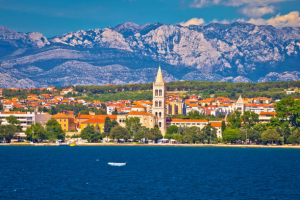Top 3 Reasons Why 1/3rd of France is Almost Empty
France is one of the world's largest countries and economies, with a population of 68 million people and an economy equivalent to India's (which is many times ... read more...larger). While looking at a population density map of France, one cannot notice an "empty diagonal" that begins in the northeast at the border with Belgium, divides the country virtually in half, and ends in the southwest towards the border with Spain. This portion of French territory is the size of Belarus, but it has a population density of roughly 30 people per square kilometer, compared to the national average of 119 people per square kilometer. So why have this phenomenon, let's take a look at the reasons below!
-
In fact, a region the size of Belarus is not empty, but the population imbalance is of significance in comparison to the rest of the country. The population concentration is significantly higher to the west and east of this diagonal than in this region of the territory.
This is not a new phenomenon. Rural regions in France began to empty during the middle of the 19th century due to industrialization, urbanization, and low birth rates. Even though these processes managed to influence France far sooner than other European countries, the explanation for this can be summed up in one word: Paris. For centuries, Paris has attracted talent, wealth, and people like no other European city. France has been one of the most populous parts of Europe for centuries, but this has changed significantly over the past two centuries. Since the era of Louis XIV, the French capital has attracted ambitious elites, drawing them from other major centers of the country and concentrating them in one place. With the French Revolution, this only intensified. This political hyper-centralism also led to economic concentration around Paris, making the city one of the world’s most prominent destinations for migration.

Photo by Léonard Cotte on Unsplash 
Photo by Chris Karidis on Unsplash -
Just 39% of the capital's residents were locals in 1920. Against this background, approximately 50% of the city's population is made up of migrants from the French countryside, with the remaining 10% coming from abroad.
Another key aspect in France's history that affects this case is the country's population. France was the most populous country in Europe during the Middle Ages and Renaissance, with one in every 4-5 people in Europe estimated to be French. France was the fourth most populated country in the globe during the time of the Napoleonic Wars, after China, India, and Japan, which contributes to French dominance over the continent at the time. But when the XVIII century came to an end and the XIX century began, the country's population began to decrease. The birth rate is beginning to decline. around 2 million French people died as a result of the Revolution and the Napoleonic Wars. Throughout the nineteenth century, battles resulted in greater mortality rates than birth rates. In the 20th century and the First World War, France lost around 1,357,800 soldiers - killed and missing - not to mention civilians killed. Such a shock to the population affects not just the loss of these young men's lives, but also the loss of the children they may have had.

Photo by Barthelemy de Mazenod on Unsplash 
Photo by Scott Evans on Unsplash -
The combination of rapid urbanization and such a decline in population, along with the economic consequences of World War I, has resulted in substantial depopulation in many regions of the country.
And, of course, the rural regions of France suffer the most from all of this. Marseille, Lille, Lyon, and, Paris, the jewel in the crown, are the main economic and cultural hubs. The Empty Diagonal in France includes mostly agricultural land. Agriculture requires fewer and fewer people because technology advances. Consequently, if 1.6 million people were working in agriculture in the country roughly 40 years ago, there are currently about 400 thousand - four times fewer. As a result, fewer jobs available and development opportunities push many young people away from these areas, while richer cities tempt them with their cultural life, career opportunities, and overall development. For certain regions, this includes the spiral effect: the smaller a region's population, the lower its economic activity and the less chance of development. This, in turn, drives even more young people, while the remaining population is mostly older, restricting economic activity even further.

Photo by Pedro Lastra on Unsplash 
Photo by Nil Castellví on Unsplash





















